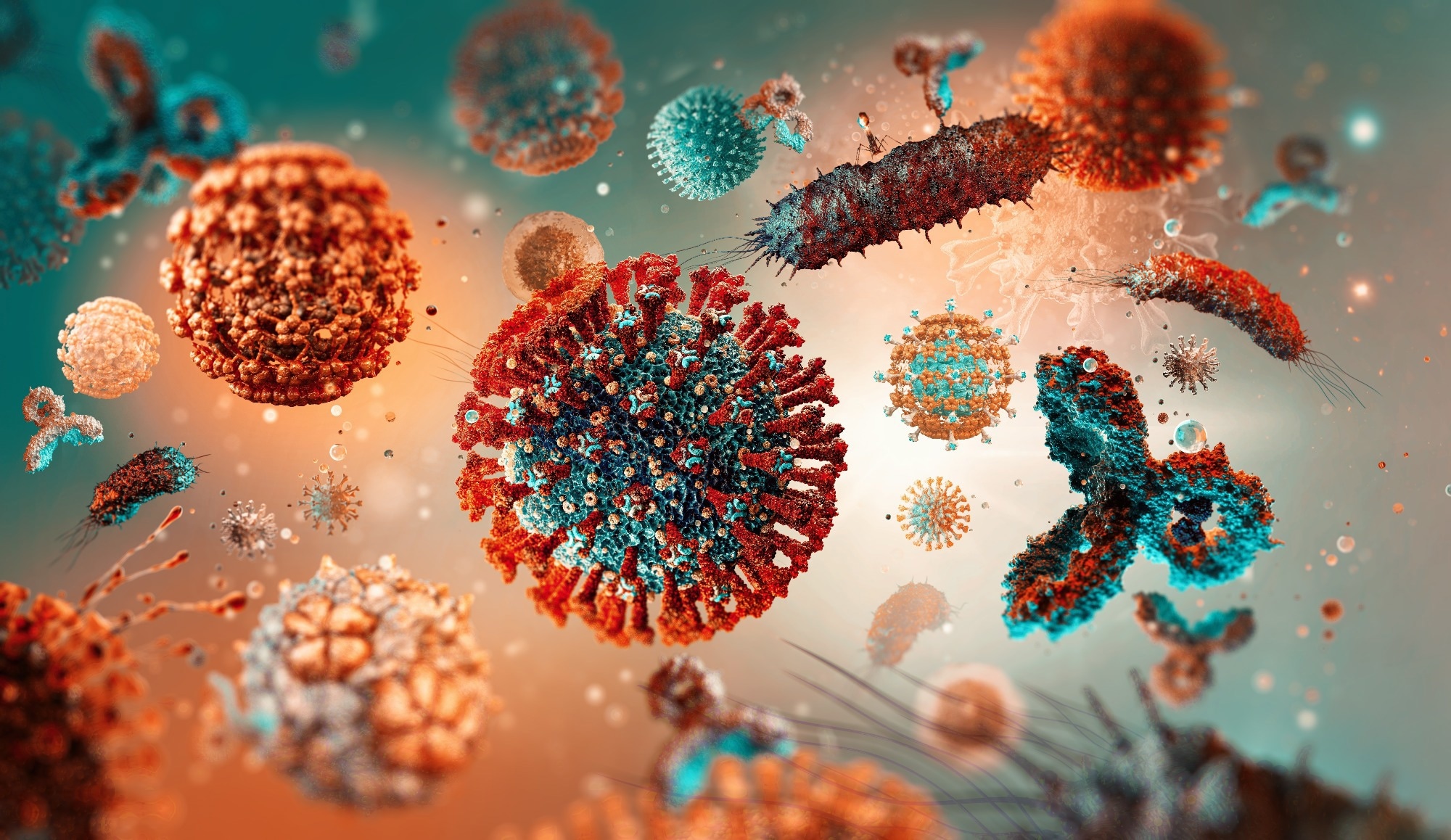In a recent study published in the International Journal of Infectious Diseases, researchers assessed the efficacy of coronavirus disease 2019 (COVID-19) vaccines in people living with human immunodeficiency virus (HIV).
 Study: Immunogenicity and efficacy of COVID-19 vaccines in people living with HIV: a systematic review and meta-analysis. Image Credit: Corona Borealis Studio / Shutterstock
Study: Immunogenicity and efficacy of COVID-19 vaccines in people living with HIV: a systematic review and meta-analysis. Image Credit: Corona Borealis Studio / Shutterstock
The morbidity, mortality, complications, and significant economic disruption caused by COVID-19 have sped up the discovery of highly effective vaccines to previously unheard-of levels. There is, however, a shortage of information on the effectiveness and safety of vaccines in the people living with HIV (PLWH) groups since vaccine trials did not publish data concerning persons living with HIV. These individuals are of particular interest since the original illness or any concomitant treatments may have suppressed or overactivated their immune systems. In addition, since viral shedding and infection have been noted to be more severe and persistent in PLWH, data on this population are urgently needed.
About the study
In the present study, researchers compared the immunogenicity and effectiveness of COVID-19 vaccinations in PLWH with healthy individuals.
The team electronically searched the Cochrane Library, PubMed/Medline, and EMBASE for published articles. First, the research papers were screened by title and abstract, followed by screening the article's full text. Then, two researchers examined each title, abstract, and entire text separately.
The team conducted a meta-analysis of prospective studies that fulfilled the following requirements: patients who received a COVID-19 vaccine of any brand and type; individuals living with HIV/acquired immunodeficiency syndrome (AIDS); articles that included and documented data related to a control group comprising individuals who are not HIV-infected; and studies reporting a minimum of one case of either seroconversion or serological titer values after COVID-19 vaccination.
The team performed a post hoc amendment to include articles that reported data related to prospective observational; qualitative analysis, or experimental studies involving human subjects, all of whom were COVID-19-vaccinated with any vaccine brand and type; studies involving individuals living with HIV/AIDS, and studies that published seroconversion rates of PLWH either with or without a control group.
The setting of the study, primary and secondary outcomes, sample size, inclusion and exclusion criteria, dropout and non-response rates, and study design were all included in the data on study characteristics. Age, sex, and medical history, including immunosuppressive medication history, were all included in the participant information. Eight vaccine types and brands, a dosage schedule, the number of participants who received each kind and brand of vaccination, and the median or mean interval between doses were among the information related to the intervention. Assay type, antibody tested, measurement method, sample collection intervals, and the number of measurements were among the outcome-related variables. Seroconversion following the first and second doses of the COVID-19 vaccine was the primary outcome of interest.
Results
The total number of studies included in the meta-analysis of seroconversion rates was 22. Ten of the 22 studies employed messenger ribonucleic acid (mRNA) vaccines, including BNT162b2 and mRNA-1273; six used inactivated vaccines, including CoronaVac and BBIBP-CorV; five used viral vector vaccines, including AZD1222 and Ad26.CoV2.S; and one used recombinant spike protein nanoparticle vaccines co-formulated with a saponin-based adjuvant, Matrix-M. Among the viral vector vaccines, four studies used AZD1222, including three where it served as the only vaccine, while Ad26.COV2.S was only used in one.
Compared to healthy controls, seroconversion was documented in PLWH in seven investigations following the first dose of the vaccination. The seroconversion rate between healthy controls and PLWH was similar. After receiving a second dose of the vaccine, seroconversion rates among the PLWH were lower than those of healthy controls in 20 studies, including 2,068 PLWH and 4,454 healthy controls. After receiving a second dose of the vaccine, individuals' antibody titers did not appear to be significantly altered or decreased.
After the first and second doses, subgroup analyses were carried out for trials including only mRNA and non-mRNA vaccines. The effects of mRNA vaccinations and non-mRNA vaccines on seroconversion were not noticeably different after the initial dosage. After the second dose, there were no discernible differences in the effects of the mRNA and non-mRNA vaccines on seroconversion.
Overall, the study findings showed that in PLWH, COVID-19 vaccinations exhibited positive immunogenicity and effectiveness. Even though the seroconversion post-second vaccination was marginally lower in PLWH compared to healthy individuals, a second dosage is consistently associated with improved seroconversion. Additional measures, such as a follow-up dose of the mRNA COVID-19 vaccine, could enhance these individuals' seroprotection.
- Juntao Yin, Yangyang Chen, Yang Li, Chaoyang Wang, Xingwang Zhang, Immunogenicity and efficacy of COVID-19 vaccines in people living with HIV: a systematic review and meta-analysis, International Journal of Infectious Diseases, 2022, ISSN 1201-9712, DOI: https://doi.org/10.1016/j.ijid.2022.10.005, https://www.sciencedirect.com/science/article/pii/S1201971222005422
Posted in: Medical Science News | Medical Research News | Disease/Infection News
Tags: AIDS, Antibody, Assay, Coronavirus, Coronavirus Disease COVID-19, Efficacy, HIV, HIV/AIDS, Immunodeficiency, Infectious Diseases, Mortality, Nanoparticle, Protein, Qualitative Analysis, Research, Ribonucleic Acid, Spike Protein, Syndrome, Vaccine, Viral Vector, Virus

Written by
Bhavana Kunkalikar
Bhavana Kunkalikar is a medical writer based in Goa, India. Her academic background is in Pharmaceutical sciences and she holds a Bachelor's degree in Pharmacy. Her educational background allowed her to foster an interest in anatomical and physiological sciences. Her college project work based on ‘The manifestations and causes of sickle cell anemia’ formed the stepping stone to a life-long fascination with human pathophysiology.
Source: Read Full Article
